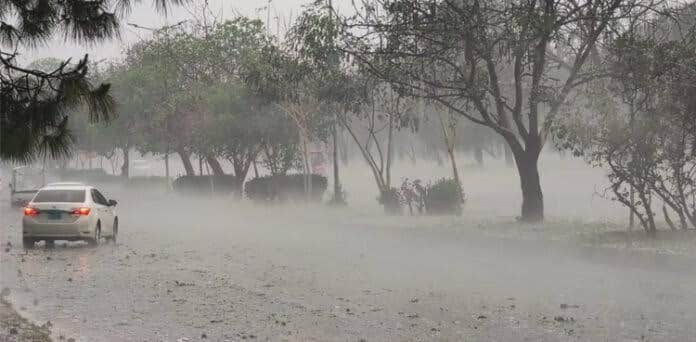Islamabad and Rawalpindi recently experienced a dramatic shift in weather as a strong rain spell, accompanied by hailstorms and gusty winds, swept through the twin cities. The heavy rainfall brought much-needed relief from the intense heatwave that had been affecting residents over the past few weeks.
In several areas, including Aabpara, the storm was particularly intense. Hailstones pelted down on rooftops and streets, and rainwater seeped into homes, creating challenges for residents and raising concerns about drainage and infrastructure. The storm caught many off guard, with its sudden arrival marked by dark clouds rolling in and a noticeable drop in temperature.
Rawalpindi recorded rainfall ranging between 10mm to 30mm, enough to significantly cool down the atmosphere and temporarily disrupt daily life. In response, the Water and Sanitation Agency (WASA) took swift action by deploying emergency staff to vulnerable, low-lying areas to manage water levels and minimize the risk of urban flooding.
Elsewhere in the region, the situation was more severe. In Neelum Valley, continuous heavy rainfall triggered landslides that blocked several roads, cutting off access and posing serious risks to travelers and residents alike. Authorities have advised caution and are working to restore connectivity and ensure public safety.
This unexpected turn in the weather has highlighted the importance of emergency preparedness and resilient infrastructure in the face of climate variability.


